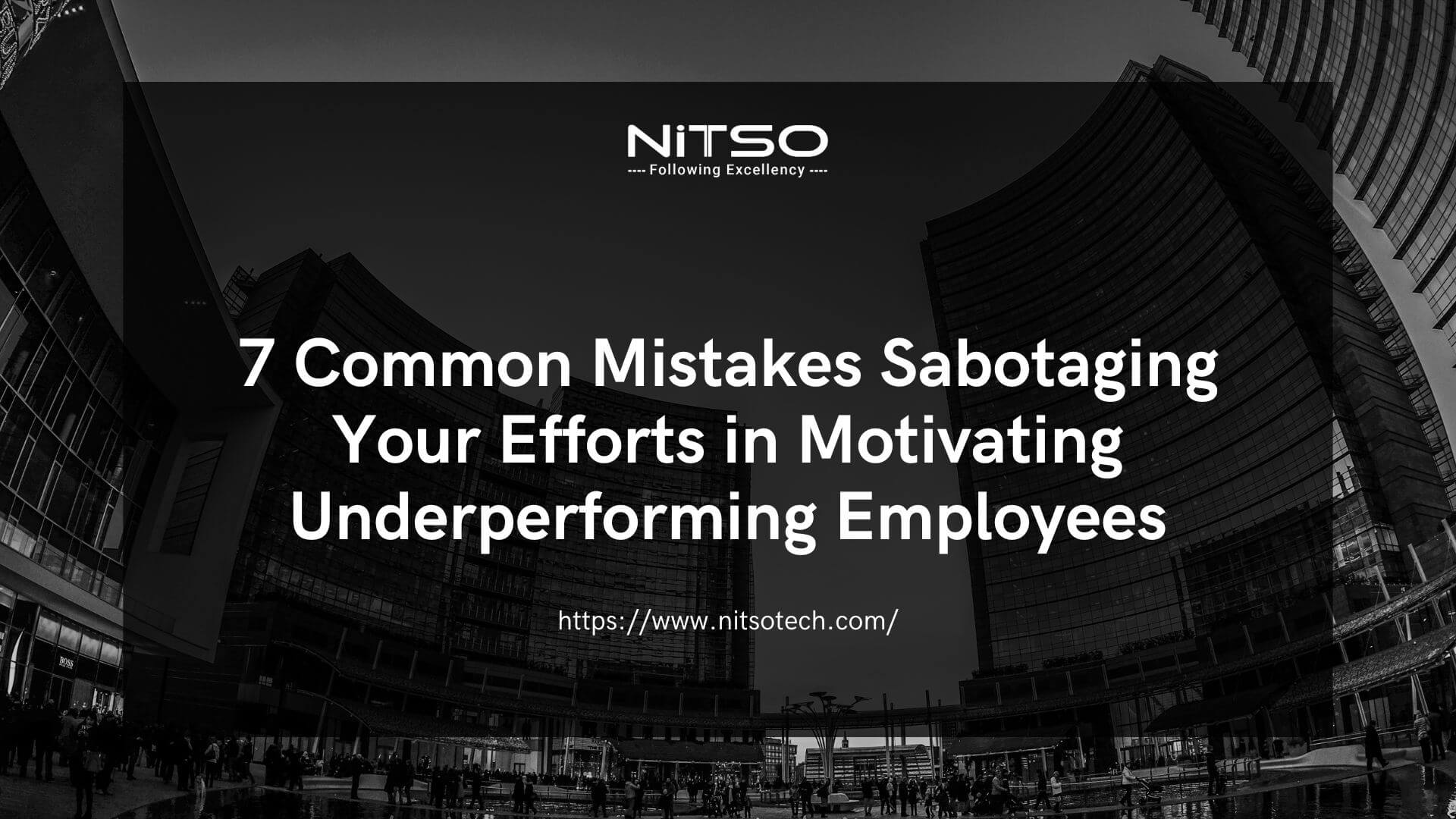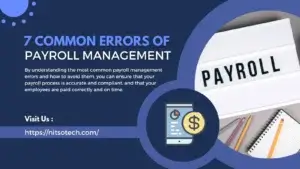Having an underperforming employee on your team can be frustrating. No matter how much you try to motivate them, it feels like nothing is working and their poor performance drags the rest of the team down. But often, the fault lies not with the struggling employees but in the approach taken to motivate them. Even experienced managers commonly make mistakes when trying to boost productivity and engagement from underperformers. If you want to turn around a struggling employee, avoid these 7 common pitfalls that only make matters worse:
Table of Contents
What are the 7 most common mistakes in motivating underperforming employees?
Mistake 1. Failing on the Fundamentals: Not Providing Clear Expectations and Feedback
When an employee is constantly missing targets or failing to complete tasks properly, unclear expectations and lack of feedback compound engagement issues. Without understanding specifics on responsibilities, performance metrics, and priorities, underperformers have no way to course correct even if intrinsically motivated to do so.
Failing to set clear guidelines and have regular check-ins focused on concrete improvement areas makes it almost impossible for struggling employees to progress. Leaving them directionless ensures sustained poor performance versus targeted progress.
Mistake 2. Demoralizing Through Impossible Targets
Managers often make the mistake of pushing underperformers to aim higher by setting ambitious stretch goals meant to spur personal growth. However, while well-intentioned, handing struggling employees seemingly impossible targets can severely backfire when it comes to motivation. Those already behind on meeting expectations will see mammoth goals as discouraging instead of inspiring.
When managing underperformers, assign stepping-stone objectives that incrementally move them closer to larger goals over time. While small wins won’t entirely close major skill or productivity gaps, they build confidence and momentum for continuous improvement. Underperforming employees need to regain their footing with achievable goals before even attempting giant leaps. Stretch goals aren’t bad, but they must come after foundational objectives have been met, not before. Throwing a drowning performer into the deep end sinks them further; lifelines to gradually work towards swimming on their own does the opposite. Meet underperformers where they are with realistic pathways for progress versus unrealistic overnight expectations.
Mistake 3. Criticizing Without Guidance
It’s easy and often justified for managers to point out everything an underperformer is doing wrong. However, criticism without corresponding guidance is counterproductive for motivation. Struggling employees already know they aren’t meeting expectations, but likely don’t know how to improve despite a willingness to do so. When providing negative feedback, also offer concrete advice and training opportunities to help them address performance gaps.
Simply telling underperformers all the areas they fall short without showing them how to get better leads to frustration on both sides. The employee feels attacked and unable to rectify issues, while managers feel like their feedback has no impact. Ensure criticism always focuses on specific steps underperformers can take to course correct, whether that’s additional coaching, training programs, or adapted workflows. Be just as quick to point out small wins as well so they know what positive progress looks like in your eyes. Guidance, not just critique, empowers change in underperforming employees.
Mistake 4. Lack of One-on-One Support
It’s natural to focus more attention on your superstar players and have less bandwidth for consistent one-on-one time with strugglers. However, underperformers need extra support and hands-on coaching for any chance of turning things around. With no additional guidance specific to their skill and confidence gaps, they’re likely to remain stagnant.
Make a conscious effort to regularly meet with those failing to hit the mark. Recurring weekly or bi-weekly touch points show you remain invested. Use this time to ask questions, understand personal challenges, brainstorm ideas, offer resources, have them walk through work, and provide encouragement. The progress discussion should focus on their growth versus comparing productivity against peers. One-on-one support makes underperformers feel heard versus excluded and fuels motivation through partnerships working towards agreed objectives.
While more taxing than ignoring issues, dedicated mentoring demonstrates a commitment to their personal development. This investment in building capabilities also uplifts engagement, essential for optimal underperforming employee outcomes.
Mistake 5. Missing Signs of Non-Work Factors
It’s easy to assume underperformance stems from a lack of skills, laziness, or complacency. However, there are often external issues negatively impacting productivity and engagement. Underperformers may be struggling with personal problems, financial stress, illnesses, mental health challenges, family demands, and more. Or there are internal workplace factors getting in the way like inadequate tools, processes, or resources.
Don’t just have performance-based conversations. Regularly check in on their well-being to uncover potential non-work circumstances also requiring attention. Facilitate open dialogue around roadblocks and frustrations so you understand the full picture. Analytics around decreased productivity only reveal part of the story. Consistently reaching out with empathy and support demonstrates commitment beyond output. Offer assistance wherever possible and improvise temporary accommodations so personal barriers have less of an impact. Helping struggling employees manage churning life issues bolsters loyalty and sparks intrinsic motivation to reciprocate understanding shown.
Making assumptions or dismissing excuses leaves underperforming employees exasperated. Peeling back the onion exposes realities needing consideration when boosting motivation and engagement.
Mistake 6. Too Much Focus on Weaknesses
When an employee underperforms, it’s natural for managers to zero in on gaps and problems. However, overindexing constructive criticism around weaknesses can spur a negative downward spiral. Strugglers feel overwhelmed trying to fix countless deficiencies, making meaningful progress seem impossible. This breeds shame, reduces self-confidence, and limits belief in their own abilities.
While addressing performance issues is necessary, balance targeted feedback with recognising strengths. Regularly tie praise back to skills, work products, or contributions the underperformer excels at. Connect wins to intrinsic motivators like growing capabilities, helping customers, or how work aids team objectives. Share positive feedback publicly and provide opportunities to showcase bright spots among peers. This fuels pride makes jobs personally rewarding, and demonstrates you notice both weaknesses and strengths.
Exclusively spotlighting deficiencies wears underperforming employees down. But coupling constructive criticism with validating strengths and contributions lifts spirits while sustaining improvement momentum. Motivation requires reinforcement that poor performance doesn’t negate workplace value.
Mistake 7. Insensitivity to Preferences/Work Styles
Employee motivation is personal and requires alignment with individual personalities and working styles. Some respond best to public recognition while others prefer private praise. Some need robust structure while others function better by setting their own plans. Some learn concepts best independently while others need interactive coaching. Failing to motivate each underperformer according to personal inclinations causes one-size-fits-all approaches to flounder.
Analyze how struggling employees tick and tailor your motivation strategies accordingly. Gauge whether they are introspective or extroverted, outspoken or reserved, structured or free-flowing. Determine if they are analytical or creative, detail or big picture focused, introverts or extroverts. Regularly ask for feedback on what management techniques resonate so you can adapt appropriately. Showcasing an understanding of inclinations and preferences makes underperformers feel personally valued, fueling engagement.
Demonstrating sensitivity and willingness to meet underperforming employees where they are wins trust and belief in employers truly invested in their success. Motivation depends profoundly on harmonizing with individual work styles.
Article you might be interested in: How to Spot and Handle a Toxic Work Environment?
Conclusion
Turning struggling employees around and restoring high performance is far from easy. However, avoiding common missteps that exacerbate motivation and engagement issues sets the groundwork for eventual success through sustained effort. Remember that underperformers still want to be productive team members but often need help breaking negative cycles dragging them down.
To recap, steer clear of these 7 motivational killers when managing poor performers:
- Failing to set clear expectations and provide ongoing feedback
- Imposing unrealistic stretch goals vs incremental targets
- Criticizing without sharing guidance on improvement
- Isolating them vs one-on-one mentoring
- Dismissing potential personal or work environment barriers
- Focusing exclusively on weaknesses rather than strengths
- Using blanket motivation tactics vs personalization
Routinely self-audit against these categories to ensure your underperformer strategy aligns with proven best practices on engagement and motivation. Just one re-energized previously struggling employee positively impacts the entire team’s morale, productivity and achievements. Invest time in understanding root causes, provide support structures, recognize progress and align coaching to individual working styles and preferences. With this comprehensive approach, you can turn underperformers into star players.








0 Comments